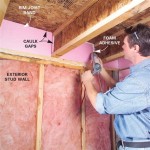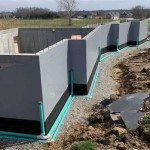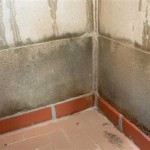Eliminating Humidity in Your Basement: Essential Aspects
A humid basement can create an uncomfortable and unhealthy environment, leading to mold, mildew, and structural damage. Understanding the causes of humidity and implementing effective solutions is crucial for maintaining a dry and healthy basement.
Causes of Basement Humidity
Several factors contribute to basement humidity:
- Water seepage: Cracks or gaps in the foundation, walls, or floors allow water to seep into the basement.
- Condensation: Warm, moist air entering the basement condenses on cold surfaces, releasing moisture into the air.
- Inadequate ventilation: Poor air circulation allows moisture to accumulate and stagnate.
- High humidity outside: During humid seasons, outside air carries excess moisture into the basement.
Eliminating Humidity: Essential Aspects
To effectively eliminate humidity in your basement, consider the following aspects:
1. Identify and Fix Water Sources:Inspect the basement for signs of water seepage and repair any cracks or gaps. Consider installing a sump pump to drain excess water.
2. Improve Ventilation:Install exhaust fans or open basement windows to improve air circulation. You can also use a dehumidifier to remove moisture from the air.
3. Control Moisture Sources:Avoid storing moisture-absorbing materials in the basement. Use shelf liners to prevent condensation on stored items.
4. Insulate Basement Walls and Floors:Insulation creates a thermal barrier, reducing condensation on cold surfaces. Consider installing rigid foam insulation or spray foam to improve insulation.
5. Use a Dehumidifier:Dehumidifiers remove excess moisture from the air. Opt for a model with an appropriate capacity for your basement size. Regularly empty the water reservoir to maintain efficiency.
6. Seal Air Leaks:Check for air leaks around pipes, vents, and electrical outlets. Seal any gaps with caulk or weatherstripping.
7. Maintain Gutters and Downspouts:Keep gutters and downspouts clean and in good repair to prevent rainwater from seeping into the basement.
Additional Tips for Humidity Control
- Use a hygrometer to monitor humidity levels. Aim for a relative humidity of 30-50%.
- Consider installing a basement waterproofing system to prevent water intrusion from the outside.
- Dry wet laundry outside or use a vented dryer to exhaust moisture.
- Use moisture-resistant paints and sealants in the basement.
- Regularly clean and maintain HVAC systems to prevent mold and mildew growth.
By addressing the essential aspects discussed above, you can effectively eliminate humidity in your basement, creating a healthier and more comfortable living environment.

3 Ways To Prevent Humidity In A Basement Wikihow

How To Reduce Humidity In A Basement Thermopro Blog

Moisture In Basements Causes And Solutions Umn Extension

How To Get Rid Of Humidity In A Basement Without Dehumidifier

6 Causes Of Basement Moisture How To Fix Them

How To Lower Your Basement S Humidity Level

How To Lower Your Basement S Humidity Level

How To Get Rid Of Humidity In A Basement Without Dehumidifier

Basement Humidity Potential Damages How To Get Rid Of It

Moisture In Basements Causes And Solutions Umn Extension








